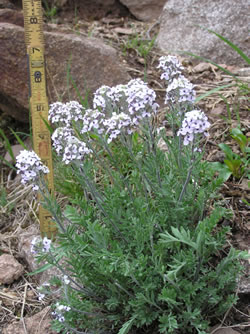Plant of the Week
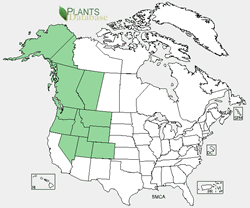 Smelowskia calycina var. americana range map. USDA PLANTS Database.
Smelowskia calycina var. americana range map. USDA PLANTS Database.
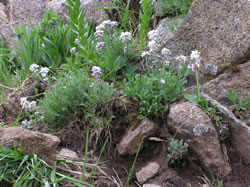 Smelowskia calycina in alpine tundra rock meadow habitat, Cross Mountain Trail, Colorado. Photo © Al Schneider.
Smelowskia calycina in alpine tundra rock meadow habitat, Cross Mountain Trail, Colorado. Photo © Al Schneider.
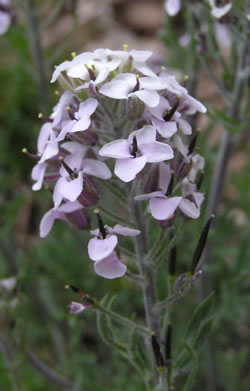 Closeup of flowers of Smelowskia calycina from Cross Mountain Trail, Colorado. Photo © Al Schneider.
Closeup of flowers of Smelowskia calycina from Cross Mountain Trail, Colorado. Photo © Al Schneider.
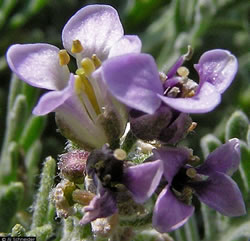 Closeup of four-petaled flower of Smelowskia calycina, Cinnamon Pass, Colorado. Photo © Al Schneider.
Closeup of four-petaled flower of Smelowskia calycina, Cinnamon Pass, Colorado. Photo © Al Schneider.
Alpine False Candytuft (Smelowskia calycina var. americana)
By Walter Fertig
Smelowskia is a small genus of mostly alpine and arctic mustards native to North America and Asia. Alpine false candytuft (S. calycina var. americana or S. americana) is the most widespread of the six North American species and ranges from British Columbia and Montana south to Oregon, Utah, and Colorado. Most populations occur in rocky boulder fields and talus slopes above treeline.
Like other members of the mustard family (Brassicaceae or Cruciferae), Smelowskia calycina can be recognized by having four-petaled flowers arranged like a cross, six stamens, and fruit pods with an internal membranous partition. Alpine false candytuft has white flowers that individually measure about 1/4 inch long but which are aggregated into a showy, elongated cluster on short stems above a dense rosette of grayish-woolly, pinnately lobed leaves. Like many high-elevation plants, the felt-like coating of hairs on the leaf surface helps protect delicate tissues from extreme cold.
Alpine false candytuft also grows in Siberia, northern China, Mongolia, and Kazakhstan, though the Asian populations are typically distinguished as a separate variety (var. calycina) or species (S. calycina) depending on one’s taxonomy of choice. Smelowskia is one of over 160 genera of vascular plants and 35 genera of bryophytes that occur extensively in the high mountains of central Asia and again in the Rocky Mountains.
English botanist Joseph Dalton Hooker first noted the unusual similarity between the flora of the Rockies and Asian Altai Range (located along the border of Russia, Mongolia, and Kazakhstan) in the 1870s. More recently, Colorado botanist William Weber has proposed that the floras of these widely separated areas were probably contiguous across northern Asia, Greenland, and northern North America in the late Tertiary before being severed by continental ice sheets in the Pleistocene. This theory would explain the persistence of similar alpine species in scattered locations in the Rocky Mountains, eastern Canada, and Central Asia without invoking episodes of long-distance dispersal by wind or birds. Weber also postulates that the alpine species that survived the Ice Age (perhaps on unglaciated rock outcrops called nunataks) have more recently moved north to repopulate arctic environments denuded by past glacial advances.


